How to Make Push-Ups Harder: Methods Explained
Push-ups are considered a classic resistance exercise, with their relatively simple form and lack of equipment - even newer exercisers are capable of completing a few repetitions of the push-up without too much difficulty.
The problem arises when the very same characteristics that make the push-up accessible also make it difficult to use as a progression tool. Within several months of training, most individuals will find that they have quickly surpassed the exercise in terms of progression.
Fortunately, improving push-up training intensity is quite easy, and may be done in several ways; exercisers can directly increase resistance through various types of fitness equipment, switch to a more challenging bodyweight exercise, or even by altering the manner in which they perform the push-up.
What are Push-Ups?
Push-ups are a multi-joint compound exercise most often used for training the muscles of the pectorals and triceps, though they also hold a place in many athletic training programs as an upper-body explosiveness builder.
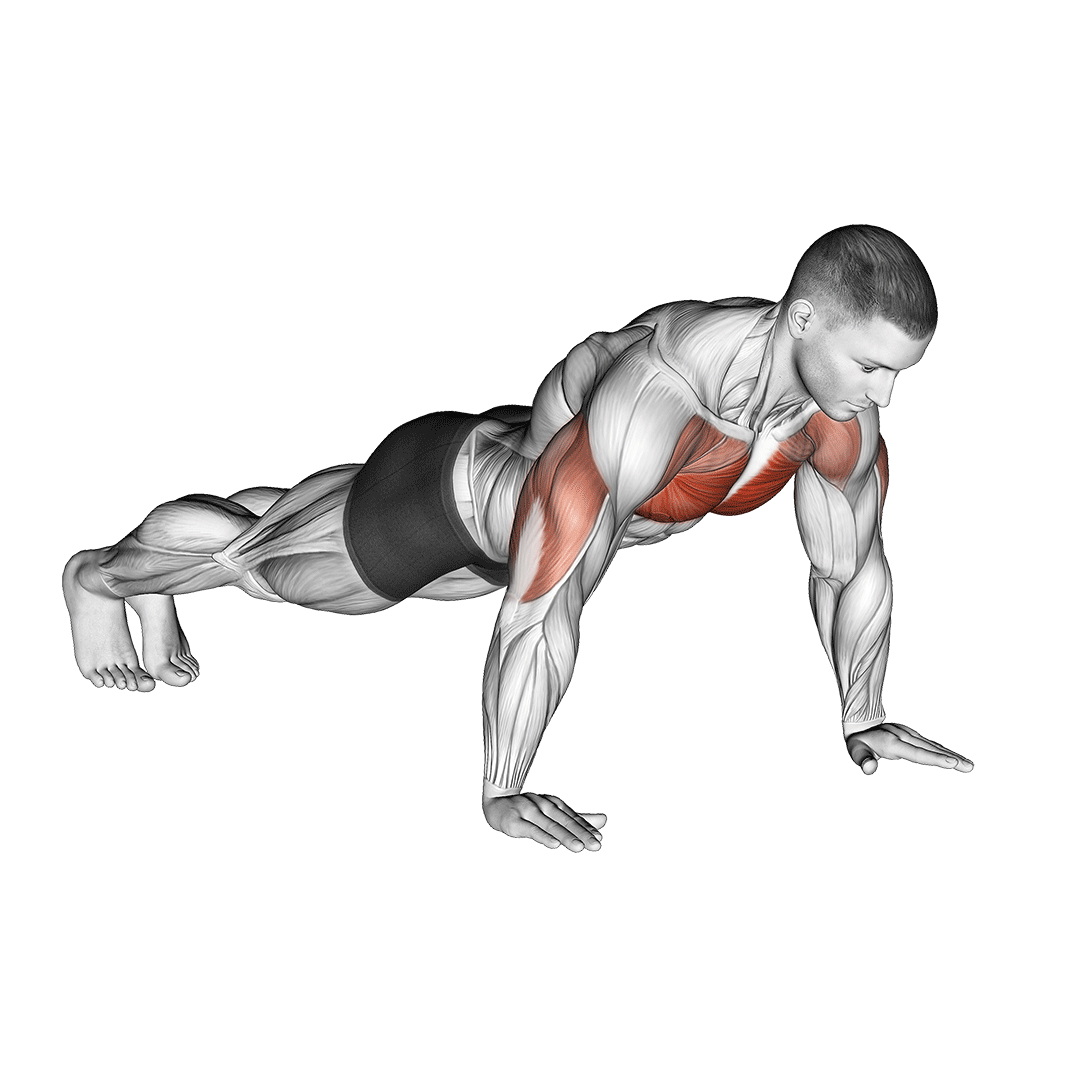
Push-ups traditionally use a portion of the exerciser’s own body weight as the sole source of resistance, and as such will often be programmed for high volume sets due to the relatively low amount of weight involved in each repetition.
How-to:
Lying on their hands and knees in a plank position, the exerciser will lower their chest to the floor by bending at the elbows, stopping once they come within several inches of the ground.
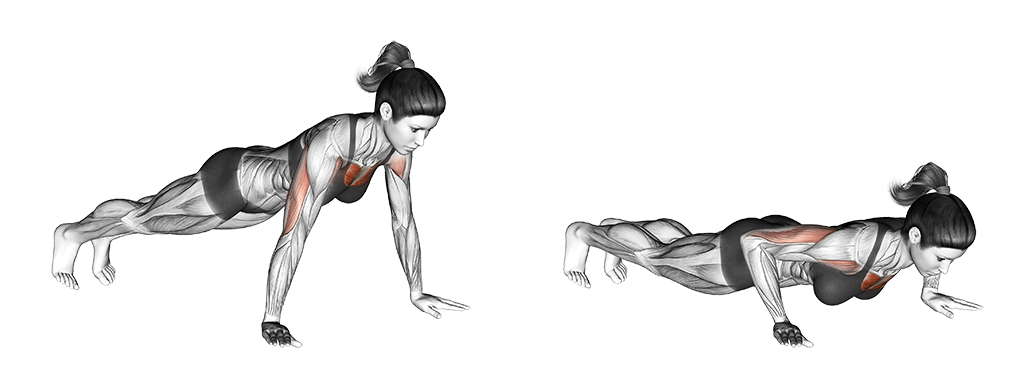
From this position, they will squeeze the muscles of their chest and extend the elbows once again, completing the repetition once they have returned to the original plank position.
Why Should Push-Ups be Made More Difficult?
Because of how rapidly exercisers progress with the push-up, there may come a point where performing sets of over 20 repetitions is needed to even challenge the body.
Not only is this time consuming, but it also causes several issues to arise, such as greater wear and tear on the joints of the body, and a diminished quality to each repetition.
To solve this problem, exercisers utilize a variety of strategies to up the intensity of the push-up, allowing them to continue progressing at the same pace without the need for an excessive amount of volume.
An Overview on Increasing Push-Up Difficulty
Push-ups may be made harder through a number of methods, each of which are better suited for a certain type of athlete or training goal.
Adding Weight With Equipment
Lifters seeking greater resistance for the purposes of strength and power development may add additional weight alongside that of their own body.
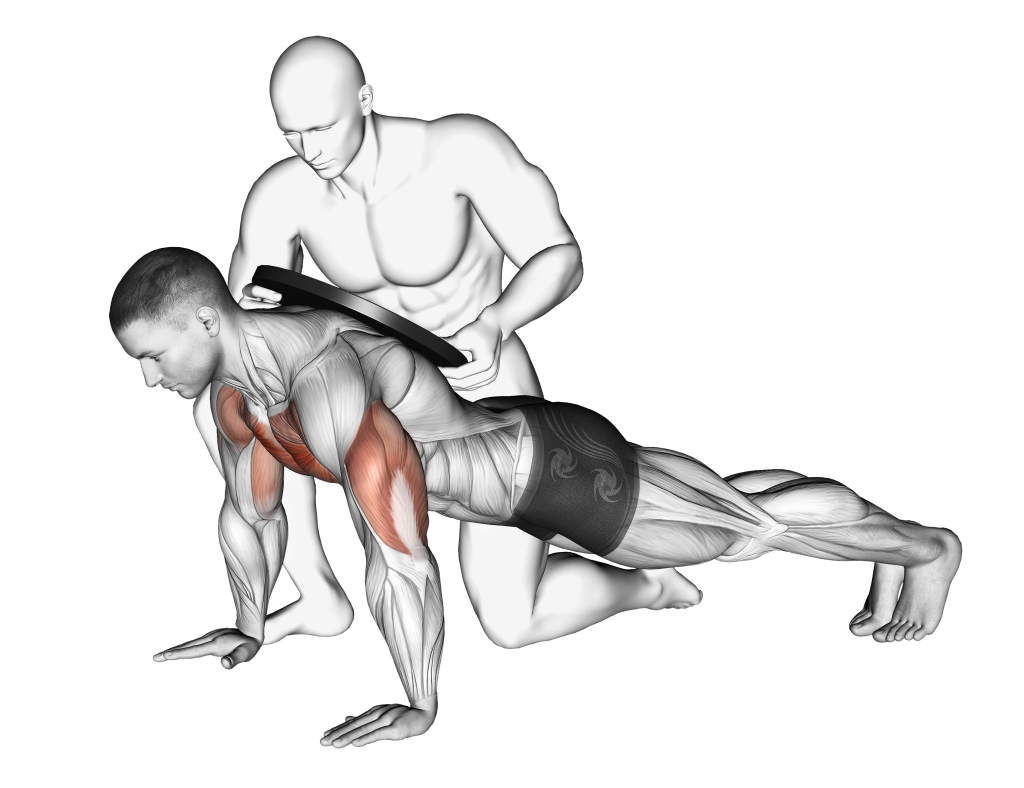
This is most often achieved through wearable fitness equipment like weighted vests or weight plate carriers, as the stance in which push-ups are performed makes it difficult to load without specialized equipment.
Using an Alternative Exercise
For exercisers that do not have access to weighted equipment or simply wish to continue pursuing calisthenic exercise, it is entirely possible to “progress” from the push-up through the use of more complex and difficult exercises.
Not all exercises fit this bill however, and it is important to pick the correct one so as to ensure the same type of training stimulus is being preserved within the workout.
Furthermore, exercisers should note that this route does not always necessarily result in greater muscular strength or size, as it is more likely to improve their technical skill in calisthenics than to result in any significant hypertrophy.
Changing Time Under Tension and Tempo
Another aspect of push-ups that is worth altering is the tempo and time under tension of each repetition.
Lengthening the movement of the push-up by slowing down parts of the repetition can greatly increase the difficulty of the exercise, and allow for greater strength and endurance developments to be created despite the fact that it is the exact same exercise being performed.
How to Alter Push-Up Execution to Increase the Difficulty
Though adding weight or picking a more difficult exercise is the more common solution, exercisers can make push-ups harder simply by changing how each repetition (or set) is performed.
1. Slow Down the Eccentric
In order to increase the intensity of each push-up repetition, exercisers can lengthen the eccentric phase of the movement - or perform what is otherwise known as a “negative”.
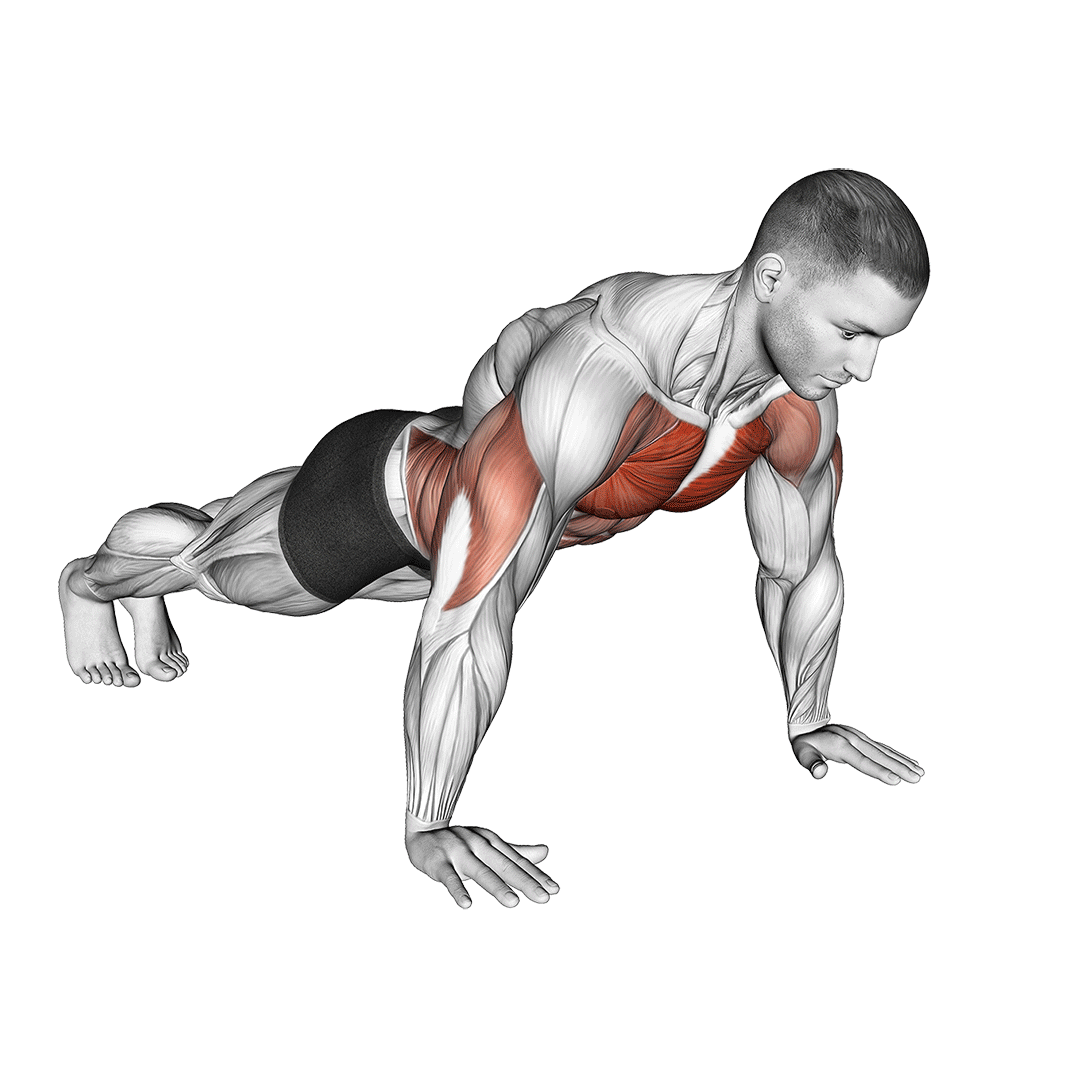
To do so, the exerciser needs to simply exaggerate the length of time it takes for them to lower their chest to the ground. The longer this phase takes to complete, the more time under tension is placed on the muscles of the body and the harder the exercise will be.
2. Count the Tempo
Some exercisers may find that they perform so many push-up repetitions that it is more akin to a bounce, rather than a push. One method of ensuring each repetition is maximized in intensity is to perform the push-up to a count.
A good starting tempo is to count out 2-3 seconds for the descending portion, 1 second at the base of the movement, and another 2-3 seconds as they return to the starting position.
Not only does this ensure good form, but it also lengthens the time under tension of each repetition, providing greater muscular training.
3. Alter the Repetition Scheme
Occasionally, we may become so focused on increasing the intensity of each repetition that we forget that multiple sets are performed within a workout.
A somewhat more advanced method of increasing push-up intensity is to alter the repetition scheme of each set.
While a traditional workout will involve a specified number of repetitions repeated for a specified number of sets, some exercisers may see better results by performing an AMRAP (as many reps as possible) set before returning to their normal volume, thereby greatly exhausting the muscles at the start of the workout.
4. Superset and Dropset
As an extension of the previous method, exercisers may also wish to take advantage of two other programming strategies used to save time and improve results; the superset and the dropset.
Though traditional supersets are meant to be performed with exercises that work different muscle groups, exercisers may find benefit in performing a movement that trains the same muscles before performing a set of push-ups.
A few good candidates are bench dips or bodyweight triceps extensions, both of which will prematurely fatigue the muscles before the push-up is even performed.
For drop sets, exercisers can utilize the previously covered AMRAP method, or otherwise scale the volume of their push-up sets in such a way that the first 1-2 sets are at an RPE of 9-10, followed by sets of lower volume so as to maintain intensity.
How to Add Weight to Push-Ups
For exercisers deciding to go the added-resistance path, there are several methods of upping the resistance of this traditionally bodyweight exercise.
Unlike playing with the programming of the push-up or picking a more advanced exercise, adding more weight is the most likely to cause muscular hypertrophy, and otherwise will not require as much familiarity with training programming or calisthenic exercise mechanics.
1. Weighted Vests and Other Wearable Equipment
The traditional weighted push-up will require specialized equipment meant to be used for otherwise bodyweight exercises like the pull-up or push-up.
These kinds of equipment will feature the weight being closely kept against the body so as to minimize swinging and ensure that the exerciser can remain stable throughout the movement.
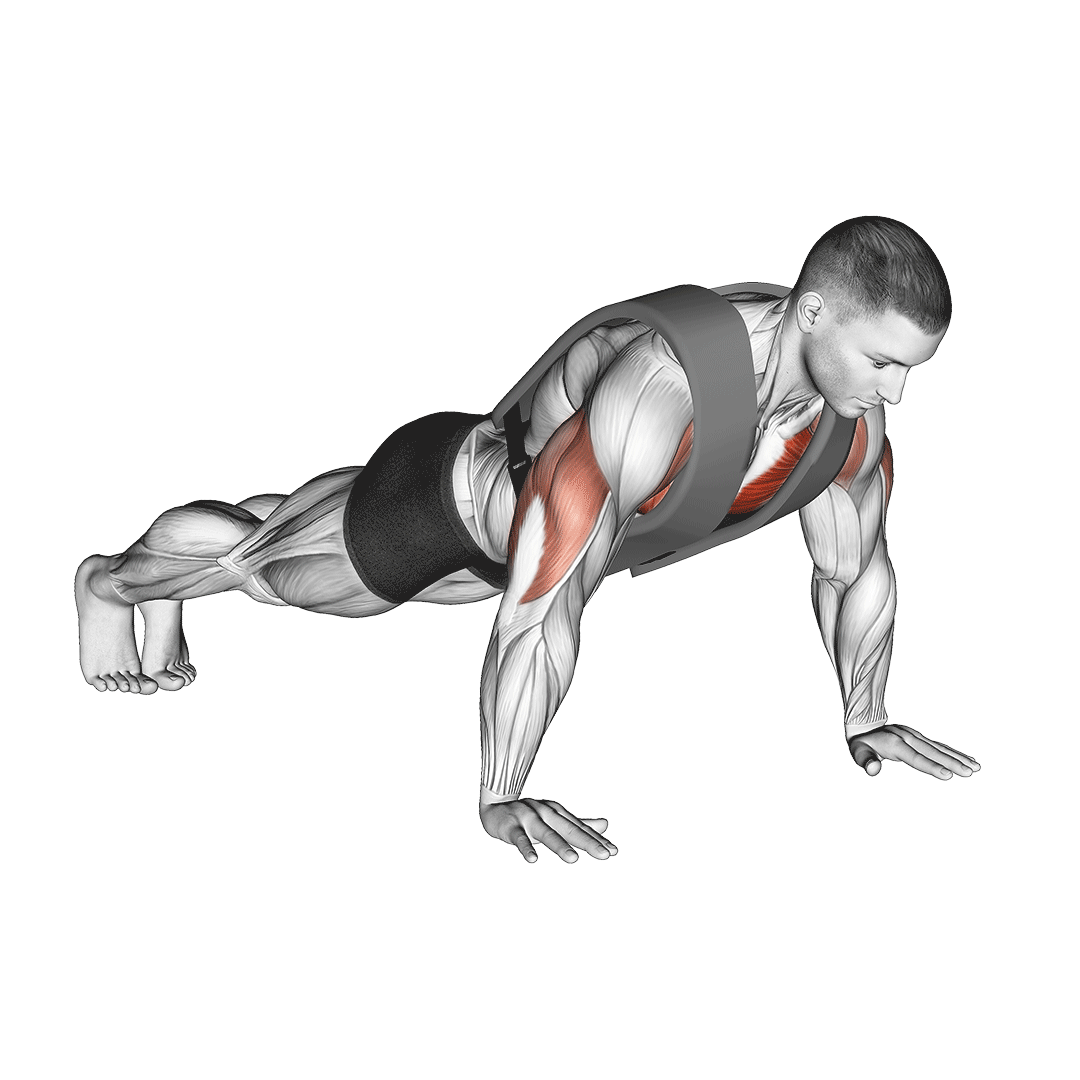
Weighted vests loaded with plates are the most commonly used for such purposes, but other types of equipment like belts with already-included metal weights are also used for push-ups.
2. Resistance Bands
In cases where weighted equipment is too expensive or inconvenient, a simple resistance band is more than enough to add further resistance to the push-up.
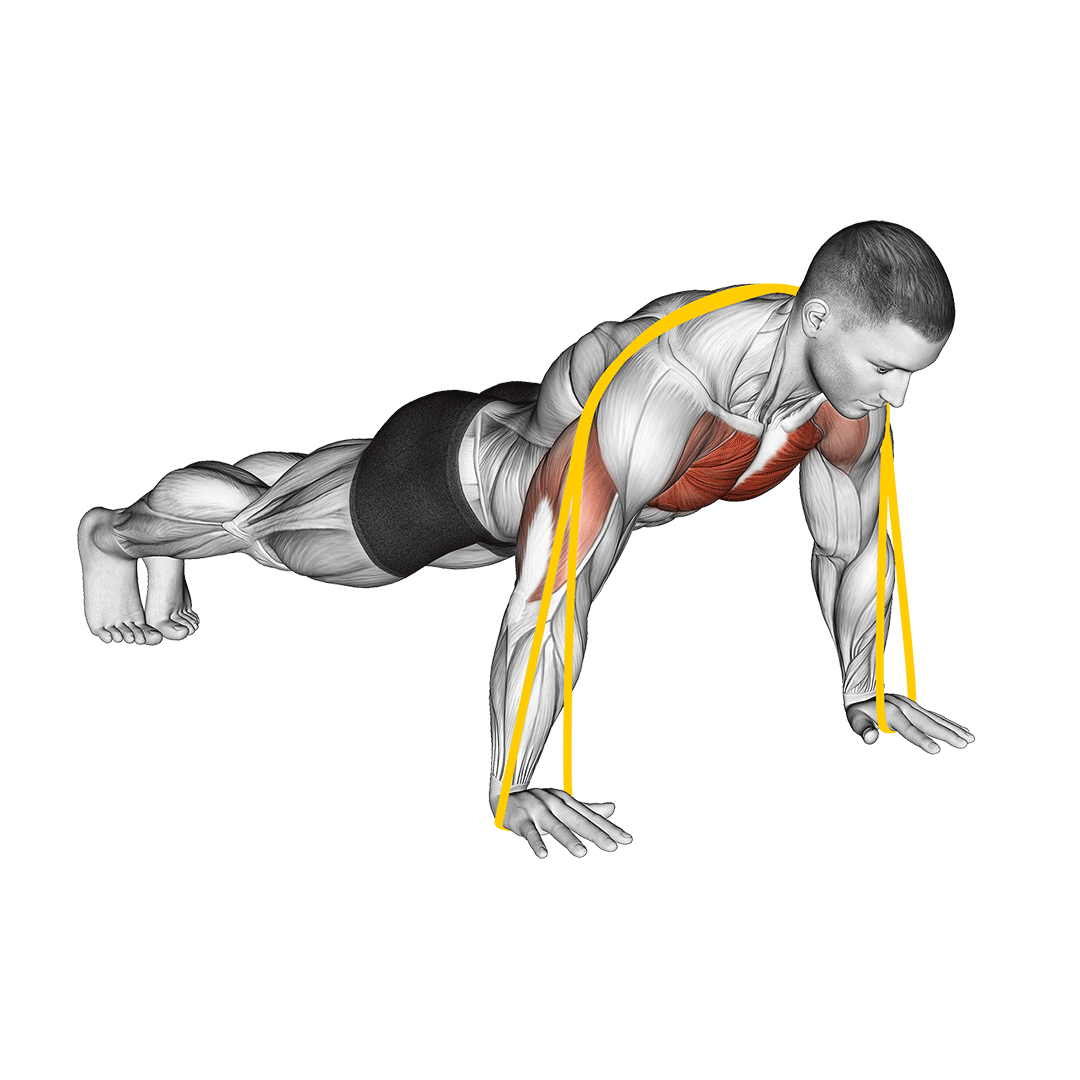
To do so, the exerciser will simply loop one end of the band beneath their palms as they lie in the plank position, placing the opposite end around their back so as to maintain tension in the band throughout the repetition.
Note that resistance band push-ups may feature a decreasing amount of tension the lower the depth of the torso, and may not be as effective as other kinds of resistance equipment for the purposes of building gross muscular strength.
3. Dip Belts and Deficit Push-Ups
While dip belts are also a favorite among practitioners of exercises like the dip or pull-up, they are not usually used for push-ups because of the weights touching the ground while the exerciser is in a plank stance.
This may be subverted by switching to deficit push-ups, where the exerciser is elevated with a pair of plyometric boxes that leave a space beneath the exerciser’s waist for the plates to fall through.
It is important to keep in mind that deficit push-ups are already considered more difficult than conventional push-ups, and all the more so should weighted deficit push-ups be reserved for advanced exercisers who are conditioned enough to perform such a complex exercise safely.
Push-Up Variations of Greater Difficulty
Finally, for calisthenic athletes that have completely exhausted all training stimulus from push-ups but refuse to use additional equipment, there are several push-up variations that can serve them perfectly.
1. Deficit Push-Ups
The deficit push-up is a spin on the conventional push-up with the range of motion increased by elevating the exerciser at the hands and/or feet, leaving space for the head and chest to lower further than would be possible if they were training on the floor.
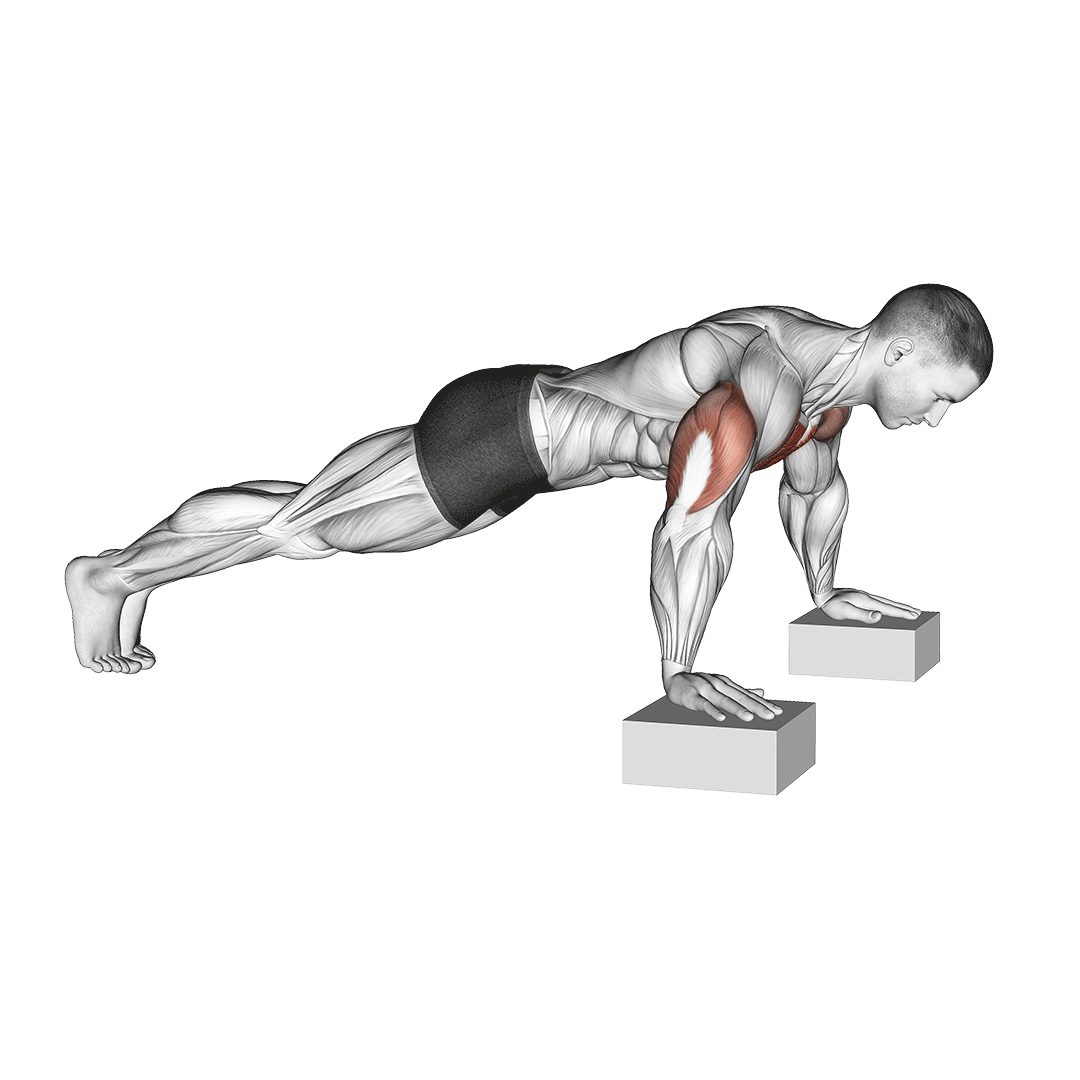
A larger range of motion will primarily increase focus on the pectoral muscles, but can also provide benefits to the deltoids and triceps if performed with sufficient time under tension.
Deficit push-ups can be performed with a pair of parallel bars, weight plates or dumbbells to raise the hands, though specialized push-up “boards” or handles can also be used.
2. Decline Push-Ups
Decline push-ups are simply a traditional push-up performed with the exerciser’s feet elevated higher than the rest of the body, summarily also increasing range of motion but furthermore altering the weight distribution of the body as well.
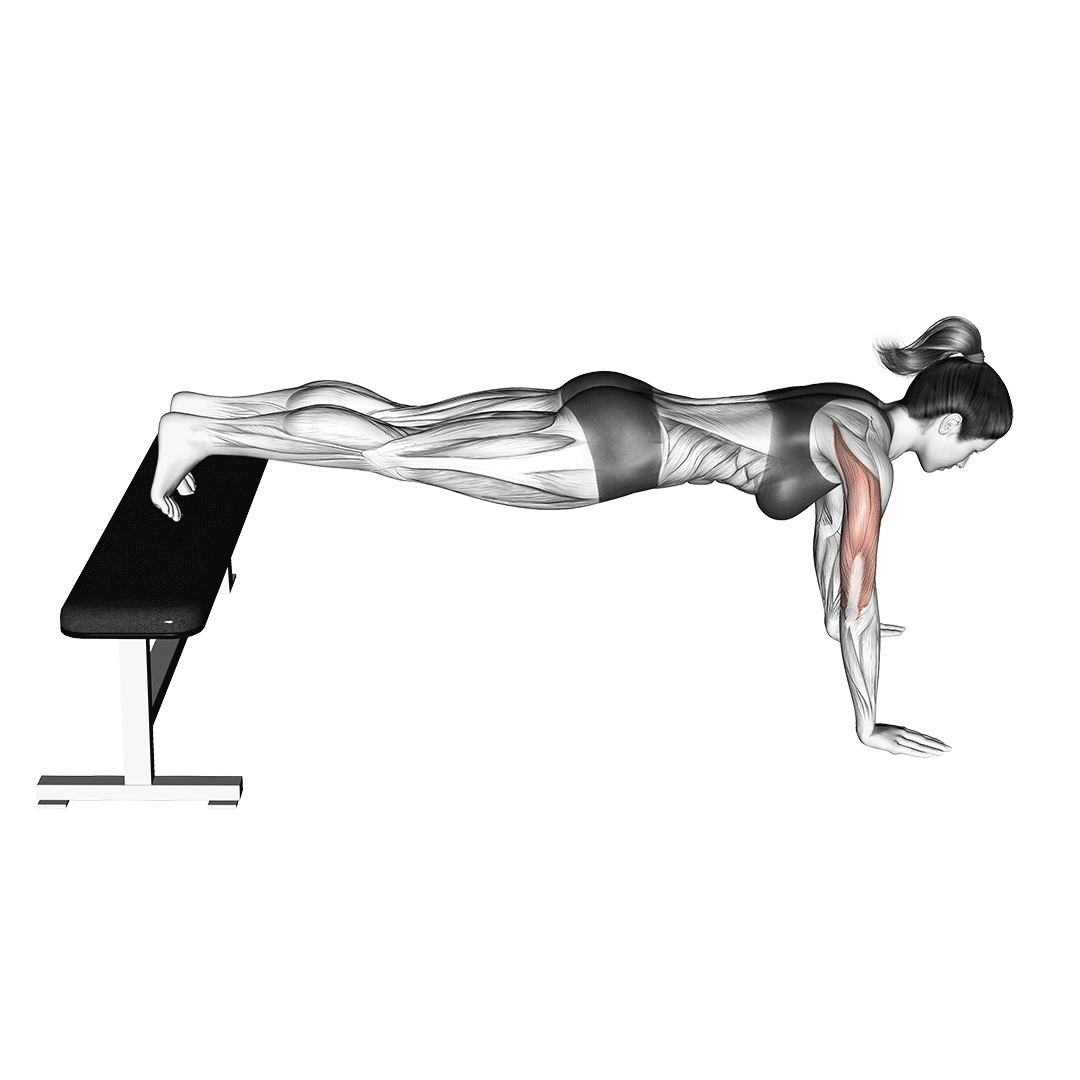
With the feet elevated, more of the exerciser’s weight is shifted forward, causing the chest and arms to bear more weight with each repetition and therefore increasing the difficulty of the exercise as a whole.
3. Pike Push-Ups
For more advanced calisthenic athletes, the pike push-up is an excellent method of making the push-up harder or otherwise beginning the transition to the coveted handstand push-up.
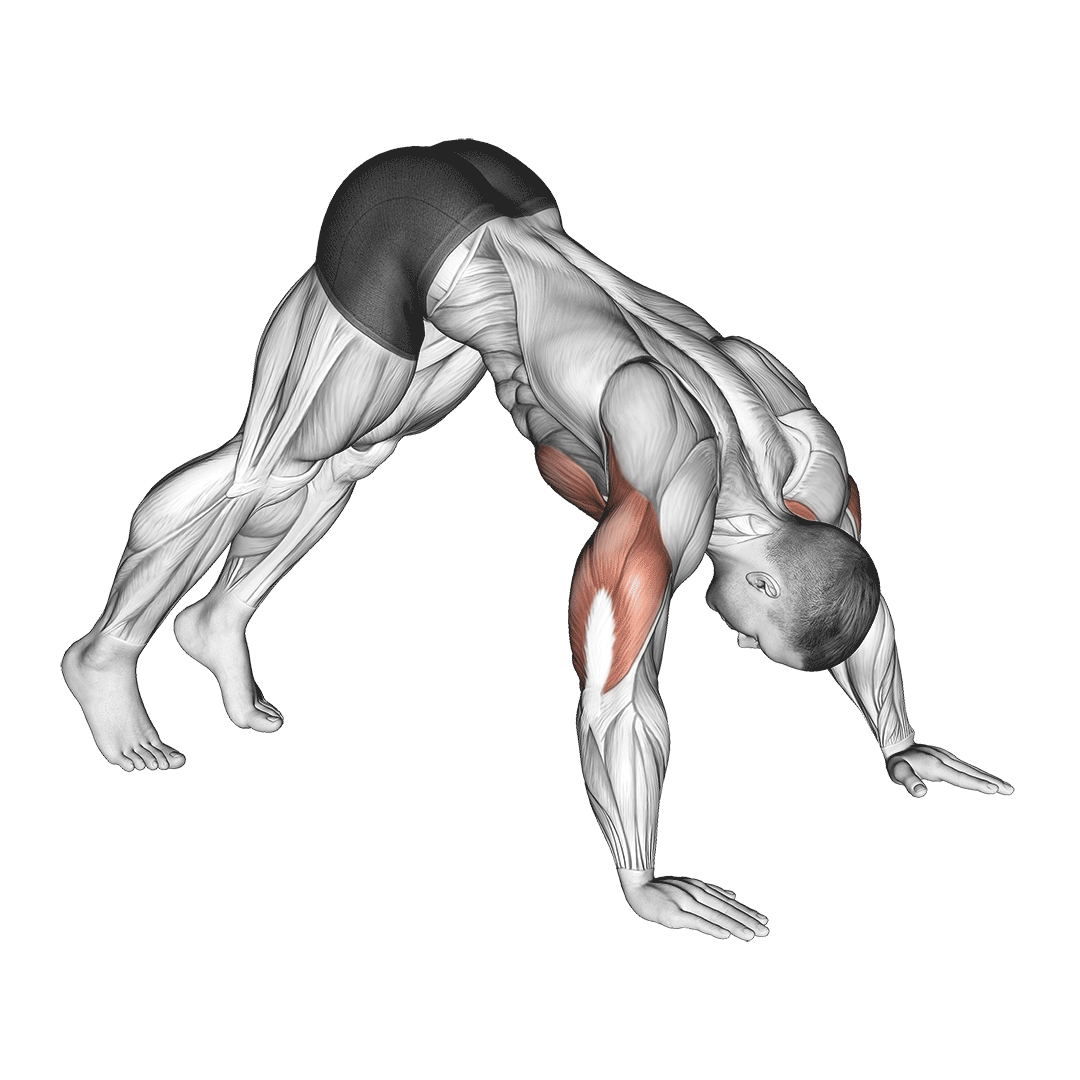
The pike push-up involves the exerciser raising their pelvis and buttocks into the air, forming a triangle with their body before lowering their upper torso and head towards the floor as they would in an ordinary push-up.
Such a change in stance causes a greater focus on the deltoids and tricep muscles, but nonetheless also greatly increases the intensity of the exercise as far more of the body’s weight is placed on said muscles.
In Conclusion
Remember that the push-up is not the only upper body exercise in your arsenal. Other bodyweight movements like parallel bar dips or handstand push-ups are arguably just as effective, if not more - not to mention the plethora of weighted chest-and-tricep exercises available.
Whether you choose to stick with push-ups or a different movement entirely, remember to ensure that whatever method chosen will allow for proper form to be used, and that you are following proper recovery protocols as much as possible.
References
1. Hassan S. 2018 The Effects of Push-Up Training on Muscular Strength and Muscular Endurance International Journal Of Academic Research In Business And Social Sciences
2. Mangine GT, Hoffman JR, Gonzalez AM, Townsend JR, Wells AJ, Jajtner AR, Beyer KS, Boone CH, Miramonti AA, Wang R, LaMonica MB, Fukuda DH, Ratamess NA, Stout JR. The effect of training volume and intensity on improvements in muscular strength and size in resistance-trained men. Physiol Rep. 2015 Aug;3(8):e12472. doi: 10.14814/phy2.12472. PMID: 26272733; PMCID: PMC4562558.
